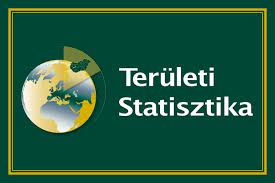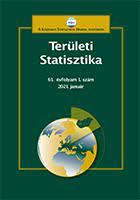A Magyarországra irányuló időskori vándorlás területi jellemzői
– különös tekintettel a németek által előnyben részesített lakóhelyekre
Koós Bálint – Tátrai Patrik – Gábriel Dóra
A nemzetközi vándorlási folyamatokba az utóbbi évtizedekben mind jelentősebb mértékben kapcsolódnak be az idősebb korosztályba tartozók (60+ évesek). A vándorlásnak ez a szelete globális szinten is sajátos változáson megy át, ahogy mind szélesebb társadalmi csoportok kapcsolódnak be, úgy válik mindinkább földrajzilag is differenciálttá a folyamat. Hazai adatok alapján megállapítható, hogy az utóbbi évtizedekben Magyarország az idősek nemzetközi vándorlásának célterületévé vált, a 2022-es népszámlálás során közel 38 ezer 60+ éves külföldi állampolgárt írtak össze. A kutatás a legnépesebb csoportot alkotó német idősek térválasztásának vizsgálatára irányul: többváltozós statisztikai módszerek bevonásával azt szándékozik felderíteni, hogy milyen települési szintű vonzerő és taszítóerők befolyásolhatják letelepedési döntéseiket. Az eredmények közül kiemelendő, hogy az idősek Magyarországra irányuló vándorlása egyrészt egyre kevésbé ölt etnikai jelleget, másrészt pedig mögötte eltérő motivációk húzódnak meg, ami a térválasztásban is tetten érhető. A német idősek esetében kiemelkedően magas a rurális térségekben regisztráltak aránya, ám a települési szintű adatok arra utalnak, hogy a hazánkban tartózkodók nem feltétlenül a népszerű turisztikai célterületeket részesítik előnyben. Sőt, jelentős részük kifejezetten kedvezőtlen társadalmi-gazdasági mutatókkal jellemezhető térségekben tűnik fel, ami arra utalhat, hogy esetükben a vándorlást nem az életmódhoz kapcsolódó tényezők (lifestyle migration), hanem a gazdasági hajtóerők (alacsonyabb megélhetési költségek keresése) vezérlik.
Kulcsszavak: idősek nemzetközi vándorlása, földrajzi arbitrázs, életmódvándorlás
Territorial characteristics of elderly migration to Hungary –
with particular regard to the residence preference of Germans
In recent decades, people belonging to the older age group (60+ years old) have been increasingly involved in international migration processes. This segment of migration is also undergoing specific changes at the global level, as wider social groups become involved, the process becomes more and more geographically differentiated. Based on domestic data, it can be established that Hungary has become a destination for international migration of the elderly in recent decades, and during the 2022 census, nearly 38,000 foreign citizens over the age of 60 were listed. The research is aimed at examining the spatial preferences of the German elderly, who make up the most populous group: by involving multivariate statistical methods, the authors intend to explore what attractive and repulsive forces at the settlement level can influence their settlement decisions. Among the results, it should be highlighted that, on the one hand the migration of the elderly to Hungary is becoming less and less ethnic, and on the other hand there are different motivations behind the migration of the elderly, which can also be seen in the choice of location. In the case of the German elderly, the proportion of those registered in rural areas is exceptionally high, but the data at the settlement level indicate that those staying in the country do not necessarily prefer popular tourist destinations. Moreover, a significant part of them appears in areas characterized by particularly unfavorable socio-economic indicators, which may indicate that in their case, migration is not driven by factors related to lifestyle (lifestyle migration), but by economic driving forces (search for lower living costs).
Keywords: international migration of the elderly, geographic arbitrage, lifestyle migration




